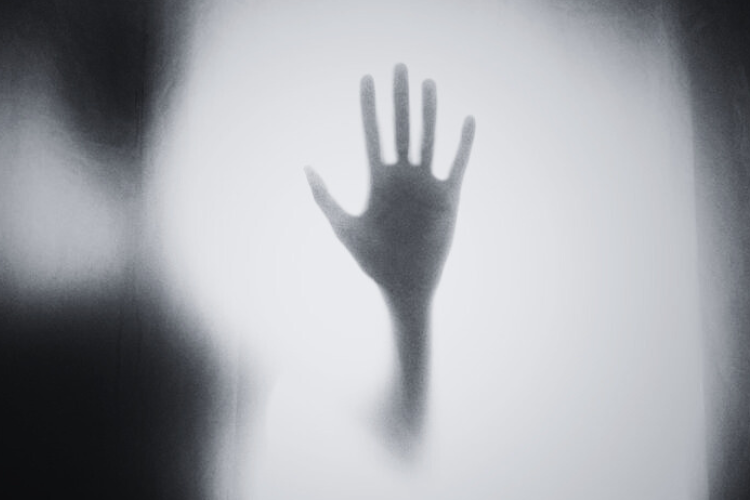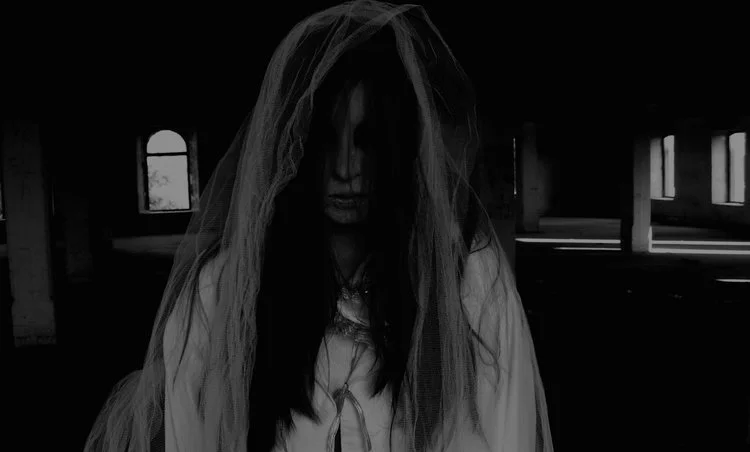A Seattle Asian Haunting We Will Go
This article was originally written for and published on the International Examiner. The Museum of Mysteries is now permanently closed, but the experience is still worth sharing for exploring some of Seattle haunts on your own, and for learning about just a sliver of the mythos derived from various Asian cultures.
I have been fascinated by the supernatural and the paranormal for as long as I can remember, with early encounters I have difficulty dismissing with pure logic and reason.
I have watched more horror films than most people know exist. I’ve gone to various staged haunted houses, tested out urban legends, explored the Ouija board, worked with Mediums, and even spent the night in haunted destinations, including a castle. For my latest adventure, I looked into the haunts around Seattle that specifically had an Asian connection. There weren’t many, but I experienced an adventure nonetheless.
I started my ghost tour exploring two of Seattle’s most visited grave sites — Bruce Lee’s and that of his son, Brandon. Equipped with a camera, a video recorder and a fellow thrill-seeking friend, we set out for the Lake View Cemetery in Seattle’s Capitol Hill neighborhood.
We were amateur ghost hunters, hoping to capture a spirit on film or experience one in person. As I snapped shots of the eerily serene cemetery surrounding me, I was overwhelmed by the abundance of crows that suddenly descended upon the tombstones like leaves falling from turning trees. Although in China and Japan, the crow is viewed as a good omen, provider of food and light; North American folklore often considers the crow as an omen of death, and needless to say, the sight of being surrounded by crows caused the hairs on my neck to stand up.
We circled around the cemetery until we came upon the resting place of Bruce and Brandon Lee, and we were not alone. Several people were on hand, paying their respects to the great legend and his son. Someone once told me that if you placed your hands on Bruce Lee’s tombstone that you could feel a great energy run through you. Sadly, I felt no surge of power flow through me, only smooth, cool stone against my hand.
Our next destination brought us to Capitol Hill’s Museum of Mysteries and our “ghost-host” Charlotte LeFevre, who is half Japanese American. The Museum of Mysteries, which opened in 2004, but now closed, could not be found on most tourist maps of Seattle. It had a quirky mission is to pay homage to the legends and folklore of the Pacific Northwest, from Bigfoot sightings to UFO phenomenon.
The small museum claimed to have the only public exhibit in the state of Bruce Lee’s legacy while he lived here in Seattle. LeFevre shared a story from Robert Clouse’s biography on Bruce Lee about the martial artist’s experience fighting a ghost. The restaurant Lee worked at and lived, owned by the famed Ruby Chow, was believed to be haunted. According to the legend, Lee battled with a black shadow but was unable to defeat it, lending more credence to the infamous Bruce Lee curse.
LeFevre shared a wealth of Seattle history with us, but it was the Capitol Hill Ghost Tour the museum was known for that I had my sights on. A young Hmong couple on vacation from California joined us on the thrill ride and would later share their own cultural ghastly tales.
A ghost hunt would be incomplete without a proper EMF detector, an instrument that will measure disruptions in the electromagnetic field, purportedly by supernatural beings. With EMF detector in hand, LeFevre led us around the Capitol Hill neighborhood. She said it should be named Cemetery Hill due to all the morgues, funeral homes and cemeteries that historically dominated the neighborhood back in the day. Apparently, many of the graves currently in Lake View Cemetery were once buried in the land that Seattle Asian Art Museum currently resides on. Some claim to have seen spirits in the museum, LeFevre said.
Not much activity was coming from our EMF detector until we reached the Oddfellows Building, located at 10th and Pine Street. LeFevre said the Oddfellows Cafe once housed a morgue in the rear. As we walked down the stairs, my friend and I felt and heard the stairs creak from directly behind us, and moved to the side to let whoever it was get by us. We looked around when no one passed us to find it was because no one was there, and we scurried down to join the rest of the group. Once we were directly outside the cafe, the EMF detector spiked into the yellow, presumably indicating supernatural activity.
Our small group circled back to the Museum of Mysteries to participate in a round of Ghost Poker. We sat around a poker table with a spot set at the head for Peter Alexander Dunnovitch. LeFevre poured Dunnovitch a shot of whiskey and placed out his favorite cigarette, a Lucky Strike. Oh, and I should mention that Dunnovitch is a ghost.
The Hmong couple shared a few stories at the poker table, explaining that their culture is highly sensitive to the spirit world. Some of their rituals include ignoring a spirit when you sense one is around, or sleeping with a knife under one’s pillow. This encouraged my curiosity about other Asian urban legends. Here, I reached out to my peers for their own dark cultural myths and ghostly tales.
My Korean neighbor grew up fearing a common spirit known as a “Gwisin.” Reminiscent of an iconic Asian horror film character, this spirit takes the form of a female dressed in all white with long black hair covering her face. Children are warned to behave otherwise a Gwisin will visit you.
Koreans also vehemently believe that if you go to sleep with a fan blowing on you, you will pass away.
Folklore of Cambodia and Thailand share a malevolent spirit known as a “Krasue.” This evil spirit also takes the shape of a female, one who is youthful and attractive. She is missing her lower anatomy, her entrails hanging from her neck, and possessing vampire-like teeth. The Krasue apparently serves as a warning to young girls to avoid getting pregnant because it was known to pursue pregnant women.
My Cambodian friend also shared that if you smell the faint scent of flowers that a spirit was near. Also, do not sleep in the middle if there are three sharing a bed because a spirit will tickle your toes (unless, of course, you'd like that sort of thing).
In Filipino tradition, individuals are warned not to sweep at night; otherwise, you will invite an evil spirit or ghost into your home.
My Taiwanese colleague’s mother told her the tale of the “Hoko Po,” a Tigress Witch that tricked two little girls home alone into believing she was a great aunt. The older girl did not believe the Hoko Po, but the younger one did and slept along side of her. Later in the evening, the older girl woke up to hear the Hoko Po eating her little sister. The moral of the story to young children was to never talk to strangers.
A young Laotian friend remembers a legend that if you sleep alone in your bed, you are not to have a second pillow next to you. Doing so will invite a spirit into bed with you.
Returning to our game of poker at the Museum of Mysteries, our ghost guest of honor Dunnovitch never made an appearance, but the EMF detector application from a nearby iPhone did warn the group to “RUN.” Really though, the most supernatural thing that occurred at the table was that I won that round of poker with a straight flush, and I don't play poker.
For the final portion of the evening, LeFevre guided us to a device known as a Ghost Communicator Box. The box is basically a high-tech version of the Ouija board, equipped with a microchip that contains all the chords of a human vocal box.
You call out the name of the spirit you would like to connect to, twice, ask the spirit a question, and plug the device in. It then starts to sound like a babbling, robotic man. The idea is to listen carefully and string together the sounds into words. When I called out to a great ancestor and asked if she had a message for me, three of us clearly heard “I love you” come through.
Although the night was not filled with the adrenaline-pumping action that I was hoping to capture, it was fascinating nonetheless for entertainment, mystery and fun.
LeFevre’s vintage ghost box communicator.


